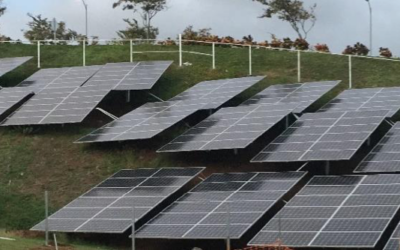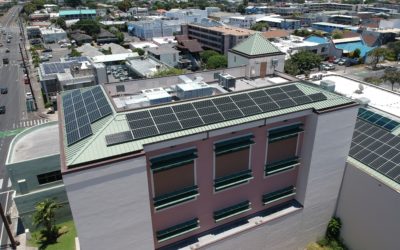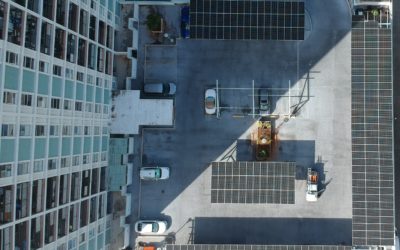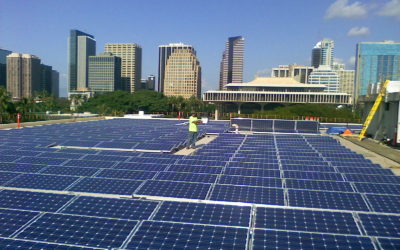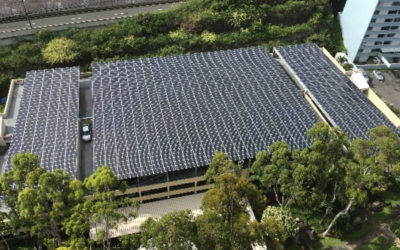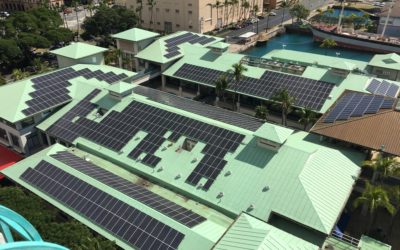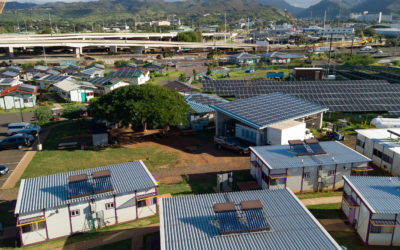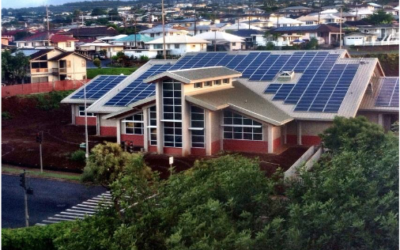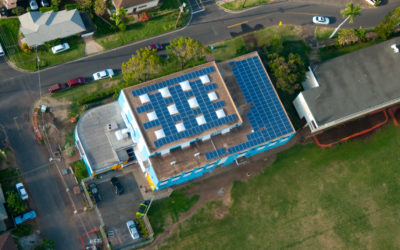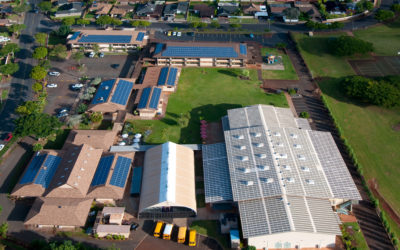





Trusted Eco-Friendly Contractor for over 20 Years
How to reach your energy saving goals

GIVE US A CALL
Set up a FREE consultation with an energy expert to analyze your energy needs

installation
Design and Install a custom solution to meet your energy needs and budget

Start saving
Maximize your return on investment while reducing your carbon footprint
Past Commercial Projects
Easter Seals
Easter Seals Hawaii Napuakea Service Center92461 Makakilo Drive Kapolei, Hawaii 96707Project Details: Project Type - Photovoltaic Facility Description - Non-Profit Community Service Project Size - 133 kwAnnual kwH Savings Photonworks Engineering LLP designed and...
UH Federal Credit Union
University of Hawaii Federal Credit Union 2019 King Street Honolulu, Hawaii 96826Project Details: Project Type - Photovoltaic / LED Facility Description - Credit Union Project Size - 114 kwAnnual kwH Savings Photonworks Engineering LLP designed and installed a...
Liliha Square
Liliha Square1425 Liliha Street Honolulu, Hawaii 96817Project Details: Project Type - Photovoltaic & Roofing Facility Description - Parking Canopy Project Size - 130 kwAnnual kwH Savings Photonworks Engineering LLP designed and installed a 130 kW...
Kalanimoku Building
DAGS - Kalanimoku Building869 Punchbowl St. Honolulu, HI 96823Project Details: Project Type - Photovoltaic Facility Description - Office / Data Center Project Size - 236.1 kwAnnual kwH Savings This photovoltaic project was added to the DAGS capitol complex energy...
Century West
Century West AOAO3161 Ala Ilima Honolulu, Hawaii 96818Project Details: Project Type - Photovoltaic / Battery Storage Facility Description - Condo Association Project Size - 432.25 kwAnnual kwH Savings Photonworks Engineering LLP was contracted by Century West AOAO /...
Hawaii Pacific University
Hawaii Pacific UniversityAloha Tower Campus 1 Aloha Tower Drive, Honolulu, HIProject Details: Project Type - Photovoltaic Facility Description - University Student Housing, Classrooms and facilities Project Size - 722 kwAnnual kwH Savings Photonworks Engineering...
Kahauiki Village
Kahauiki VillageProject Details: Project Type - Battery Storage, Photovoltaic, Water Heating, Residential and Commercial Electrical, and Civil Facility Description - Housing Community Development Project Size - 500 kWAnnual kwH SavingsThis project was a design build...
Aiea Public Library
Aiea Public LibraryProject Details: Project Type - Photovoltaic Facility Description - Public Library Project Size - 84 kW Annual kwH Savings Photonworks Engineering LLP installed an 84.00 kW DC solar photovoltaic system at the Aiea Public Library during 2013 and...
Boys and Girls Club of Hawaii
Boys & Girls Club of HawaiiEwa Beach, Waianae & Honolulu Project Details: Project Type - Photovoltaic Facility Description - Public Non-Profit Project Size - 208.8 kW Annual kwH Savings Photonworks Engineering LLP was hired by Kairos Energy Capital to design...
Hanalani Schools
Hanalani Schools94-294 Anania Drive Mililani, HI 96789Project Details: Project Type - Photovoltaic Facility Description - Private School Project Size - 327.12 kwAnnual kwH Savings Photonworks Engineering LLP presented and sold the project directly to Hanalani School’s...






What makes photonworks different?
We are not trying to be the biggest. We are striving to be the best. Photonworks mission is to provide the highest quality products and best customer experience possible so our clients become fans and promote PWE services. Most all of our residential clients are referrals and our commercial clients are repeat customers. We believe you deserve the best. Our goal is to exceed your expectations & our reputation reflects these values. Photonworks one-stop full engineering to construction solutions have served thousands of customers in Hawaii and beyond.
Click to read more...
Photovoltaic solar systems are a reliable and eco-friendly way to reduce the amount of money being spent on electric bills. If you are considering adding a PV system to your home or facility, there are numerous benefits that can be gained. There are also a number of variables that need to be taken into account such as attachment options and the amount of sunlight reaching the specific area where the array is to go throughout the year. With some of the highest utility rates in the nation, there is typically a great potential for savings regardless of geographical location.
How do PV systems actually work?
Photovoltaic or “solar panels” work through what’s called the photovoltaic effect. This is the process that generates electric current when light hits the panels. It’s not a new discovery, dating back to 1839 when French physicist Alexandre Edmond Becquerel realized through experimentation that conductance increases with illumination. Today, modern materials like semiconductors and alloys allow us to create stronger panels with ever-increasing efficiency to convert light to electricity.
The other main component of PV systems is the inverter. This is a piece of equipment that converts the DC (direct current) energy being generated by the panels into usable AC (alternating current) power for use in your electrical system. Modern inverters are able to optimize production and communicate any problems the system may be experiencing while taking up an ever shrinking amount of wall or roof space.
Because the generation coming from the PV system only occurs when the sun is shining, the energy produced must be either used or sent to the electric grid. Depending on the interconnection agreement of your system, you may receive anywhere from the full retail rate (the rate you currently pay for electricity, measured in kilowatt hours) to no compensation at all. This is an area where Photonworks can help determine the most beneficial arrangement for your situation. There is a third option for the surplus energy, and that is storage in batteries. Adding a battery will allow you to use the excess energy to charge a battery during the daylight hours, and once the sun sets, discharge the battery to enable the continued powering of the electric loads within the home or facility. Battery sizing is very important so that you have enough stored energy to get you through your overnight needs, but not so much that there is excessive capacity not being utilized. Analyzing a customers’ utility bills, future plans, and site constraints give Photonworks the inputs needed to engineer the most economical and practical battery systems.
Going off the Grid
Islanding is the term for severing the connection between a home or facility and the utility grid. Having this ability may be of interest for many reasons including having electricity in remote areas that don’t have power lines, continuing to have power after a natural disaster or grid outage, or simply to leave the fossil fuel-based generation of the major utilities. Adding in other forms of backup generation such as wind, fuel cells, or diesel generators is common in case there is not sufficient sunlight over prolonged periods.
Whatever your situation, there are likely a number of options for you to save money, improve resiliency, or reduce your carbon footprint.
Renewables in Hawaii
Under the Hawaii Clean Energy Initiative created by the US Department of Energy and State of Hawaii in 2008, the State is planning to have 100% of energy generation come from renewable sources, such as solar, wind, geothermal, and biomass, by the year 2045. Below are the policy directives which the HCEI is guided by:
1)_Diversifying our energy portfolio
2) Connecting and modernizing our grids
3) Balancing technical, economic, environmental, and cultural considerations
4) Leveraging our position as an innovation testbed
5) Creating an efficient marketplace that benefits producers and consumers
From the HCEI‘s latest update
The initiative has grown stronger over the course of three gubernatorial administrations. In 2014, HCEI renewed Hawaii’s commitment to setting bold clean energy goals that include:
- Achieving the nation’s first-ever 100 percent renewable portfolio standards (RPS) by the year 2045.
- Reducing electricity consumption by 4,300 gigawatt-hours by 2030, enough electricity to power every home on Oahu, Maui, Molokai, Lanai and Hawaii Island for more than two years.
- Reducing petroleum use in Hawaii’s transportation sector which accounts for two-thirds of the state’s overall energy usage.
Hawaii continues to make progress towards HCEI goals. To account for market changes and optimize innovative opportunities, the process has remained nimble while also responsibly addressing aging infrastructure demands and limitations.
Click the below buttons to see how you can become part Hawaii’s renewable energy future!
Database of State Incentives for Renewables & Efficiency
Hawaii Solar Energy Association
Solar Energy Industries Association
National Renewable Energy Laboratory
Photovoltaic or PV (Photons per Watt) is the technology that enables solar power to convert light into electricity. It is a form of solar power that is used to generate electricity from photons. Photons are ordinary photons of light that have been thrown by the sun’s light and that strike the earth’s surface.
For more than a decade now, PV has emerged as one of the most promising and most advanced technologies in terms of electricity generation. This technology provides clean, green and sustainable alternatives to conventional sources of energy. With the help of a reliable and trusted solar solutions provider, you can very well be confident about your energy needs in the future.
Photovoltaic systems are used in order to generate electricity by converting sunlight into electricity. PV solar cells are the building blocks of photovoltaic systems. When the photovoltaic cells absorb sunlight, they produce electricity by converting the light’s photons into electrons that are released by the captured electrons.
Photovoltaic systems are the most cost-effective and dependable means of generating electricity in the absence of wind or sun power. The most efficient use of PV solar panels is to create electricity using the direct current (DC) technology. There are two types of PV solar panels: active and passive.
Active PV solar panels are those that use the power produced by the PV cells as a source of electric power. These panels are then called active as they have no cooling and heating devices that require cooling and heating fans or heatersto operate. They can be set to work even when the sun is not shining. Active PV solar panels that operate with DC power are known as inverters and they may be powered by solar cells, batteries, or by both.
Inverters are relatively cheaper than solar panels because they use DC technology to convert the DC generated power to AC power, which is the preferred power source for most residential purposes. Inverters are a kind of inverter and they use DC power to run appliances such as computers, DVD players, refrigerators, air conditioners, televisions, security systems, computers, washing machines, backhoes, and lawnmowers.
Passive PV solar panels also use DC power, but they do not use DC inverters. They are called passive as they are powered by batteries or through two solar panels.
Solar panels that use passive technology work on the principle of solar radiation. You do not need cooling and heating devices to operate them and they can be set to operate even when the sun is not shining.
One of the most important considerations before deciding on a photovoltaic system is the size of the installation. A photovoltaic system that is too large will not only increase the energy costs, it will also require a larger electrical grid to provide it with power.
To ensure that the photovoltaic panels that you buy are of the highest quality and will meet your requirements, ensure that you go through the manufacturer’s or installer’s certificate. The photovoltaic panels should be tested for leakage and whether it meets the quality standard of the panel. Ensure that the panel is installed properly.
The installation of photovoltaic panels is the most important consideration to make when purchasing them. They should be installed so that they do not cause any unnecessary strain to your body.
If you have an issue Photonworks is here to listen
We engineer and build custom solutions that meet your needs, work within your budget and maximizes your return on investment. For 20 years we have been putting our customers first. Come join us in the journey to creating a renewable & sustainable future.

